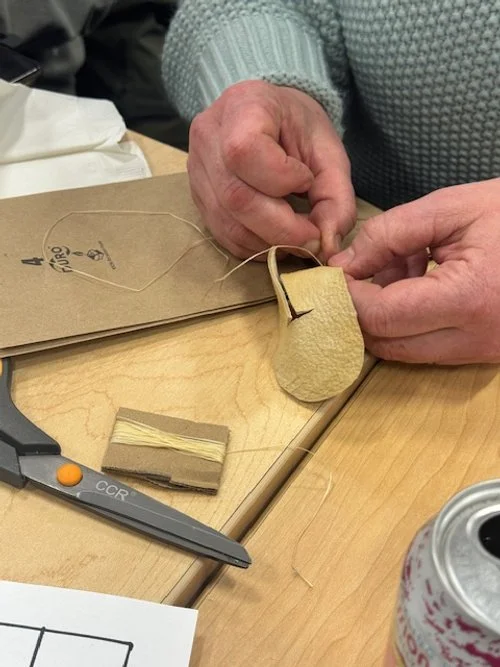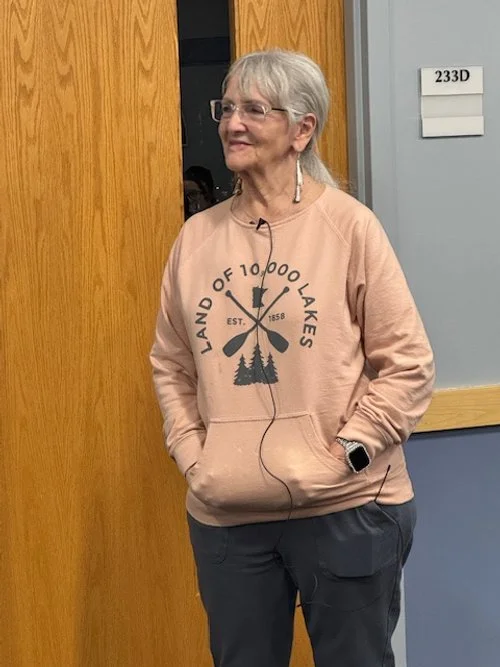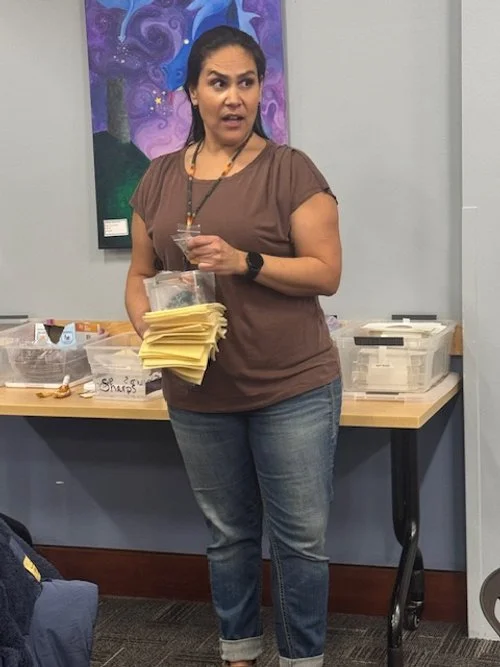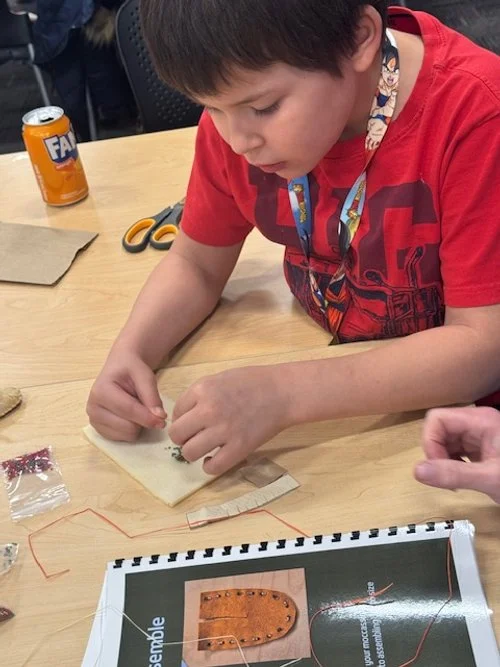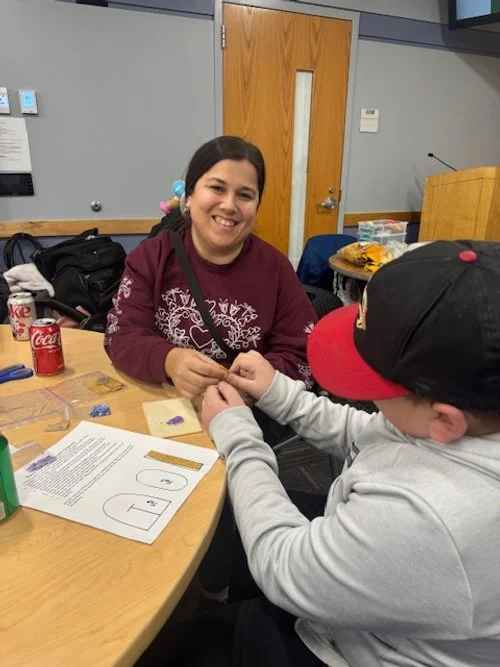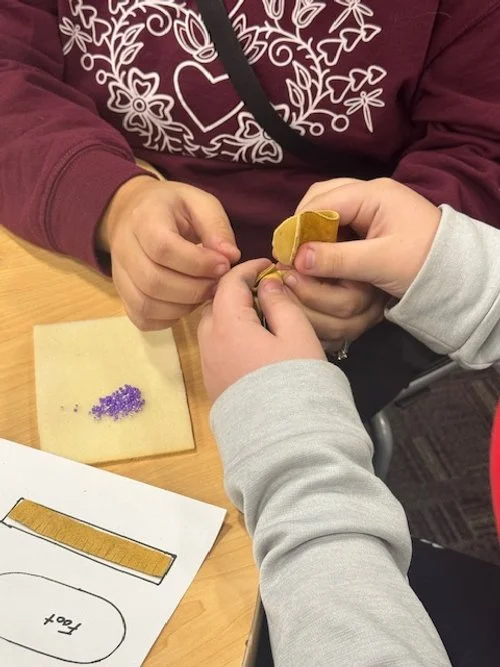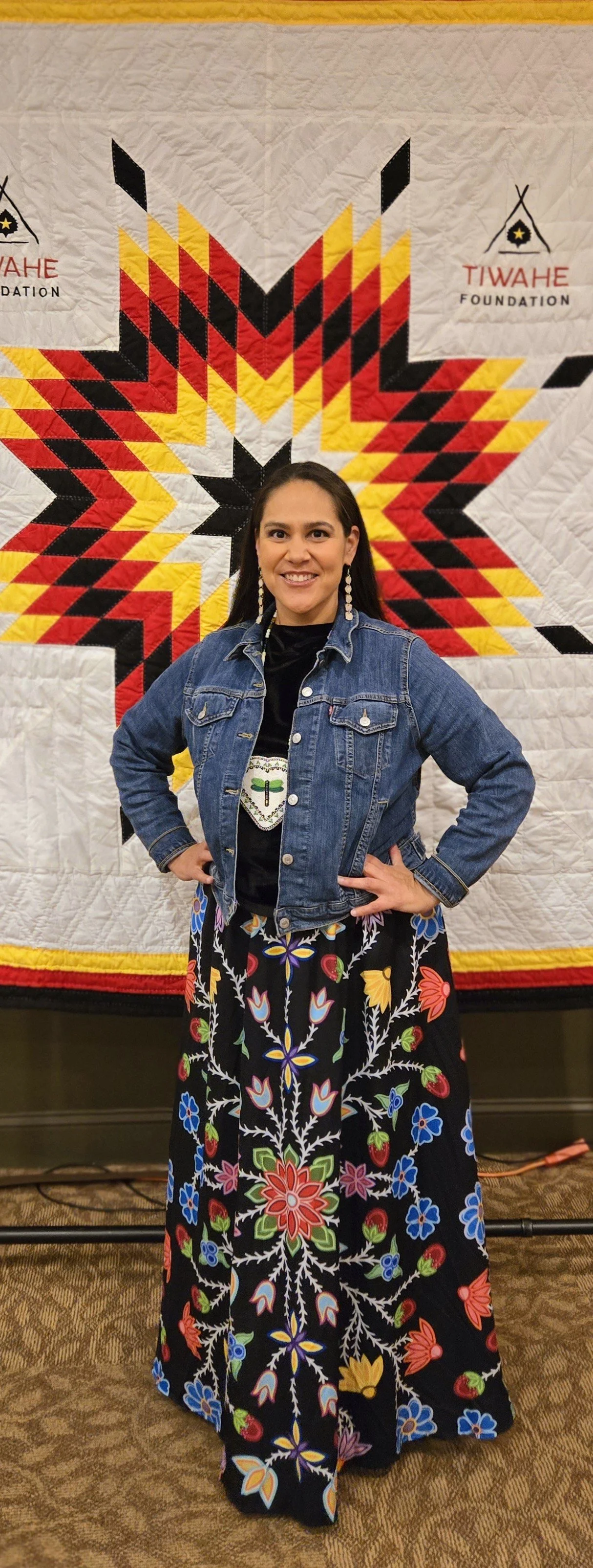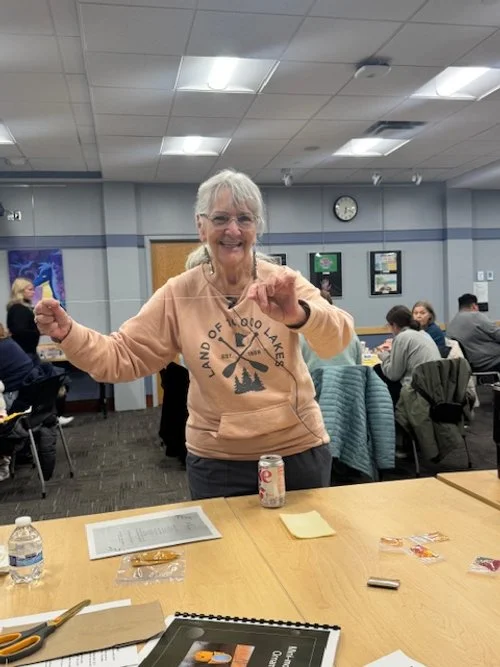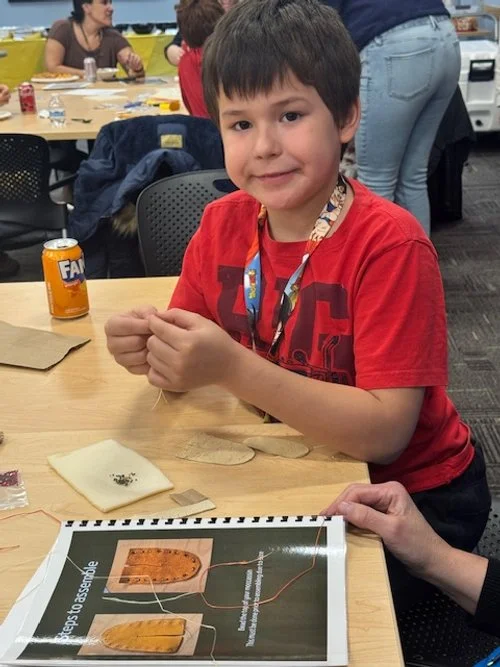CULTURE THROUGH CRAFTING - BAND ELDER TEACHING FAMILIES IN HOPKINS SCHOOL DISTRICT
Story and photos by Aabawaagiizhigookwe, Toya Stewart Downey
Mille Lacs Band Elder Ishkode, Carol Hernandez believes it’s a responsibility to share and pass along the traditional crafting skills that she has learned over her lifetime. To make that happen, Hernandez spent three hours with students, families and staff in the Hopkins School District on a recent December Friday night to teach them how to make small moccasin ornaments.
More than 50 people attended the event that was filled with lessons, laughter and earnest determination to learn how to sew and bead the small leather pieces while under the helpful and watchful eyes of Hernandez. “Nothing is meant for us to keep, otherwise it will be lost,” said Hernandez. “I love to teach all ages and like to see all generations learn together.”
Annie (Andrea) Faue, the American Indian Education Coordinator for the Hopkins School District, was one of the organizers of the December family night. Faue, who is an enrolled member of the Red Lake Band of Chippewa, and raised in the Sam family in Mille Lacs, said that cultural teachings are an important part of her work.
“These events are crucial to the success of our program,” she said. “Many of our students and their families do not have access to their heritage/culture. They do not have anyone else to teach them about being Native. Our American Indian Ed team works very hard to find knowledgeable Native teachers and makers to come and instruct for us." That’s where Hernandez’s expertise came in. Over the years she has taught different crafts including making moccasins, sewing blankets, ribbon skirts, tobacco bags, and porcupine quill on birch bark earrings. Each time she teaches a craft she shares information about the source of the materials – whether it’s the animal that gave its life or a tree or plant that provides the traditional medicine that is harvested from it. “I was taught not to waste anything and to use what we can,” Hernandez said.
To prepare for the class she spent about four hours cutting the pieces of deer hide to ensure that the pieces would be uniform and would make it easier for the families. Besides teaching, she continues to be an avid student by taking classes that others offer so she can learn from them. Justyne Vogel, who is enrolled at Leech Lake attended with her two sons, Ryan (10) and Miles (7) who were both focused intently on learning how to put the ornament together. “For me, it is really important to get my kids involved and this smaller craft is easier for them,” said Vogel. “It’s also nice to get to meet other Native people from around the metro area.”
Amanda Norman, who is a citizen of the White Earth Band, shares a similar perspective. Her daughter is enrolled in Hop kins schools and they try to attend as many culture nights as possible because “they create community.” “What they do is so rich and thoughtfully done and makes our kids stronger and anchored in the community, and builds connections,” Norman added. Jim Hebeisen, who is the principal at Tanglen Elementary School, enjoys attending the culture nights to both learn the crafts and support his Native American students. It also helps him connect with his Lakota heritage. “Lessons like these instills confidence in students as they are challenged to learn new things…it helps them learn and grow,” said Hebeisen, who shared that an added bonus of at tending is it creates “a special bond and connection” with his students.
He credits the district’s Indian Education team, Faue and her colleague, Debb Andreen, for creating an inclusive environment that makes everyone feel welcome. Plus, an added bonus is that besides learning about culture and traditions, the students in the room also connect to the education that happens during the school day, Faue added. “By crafting with our groups, we are able to create amazing pieces, connect as a community, and apply educational skills to our crafting,” said Faue. “Without realizing it we are using math skills, project-based learning and are individualizing learning.


